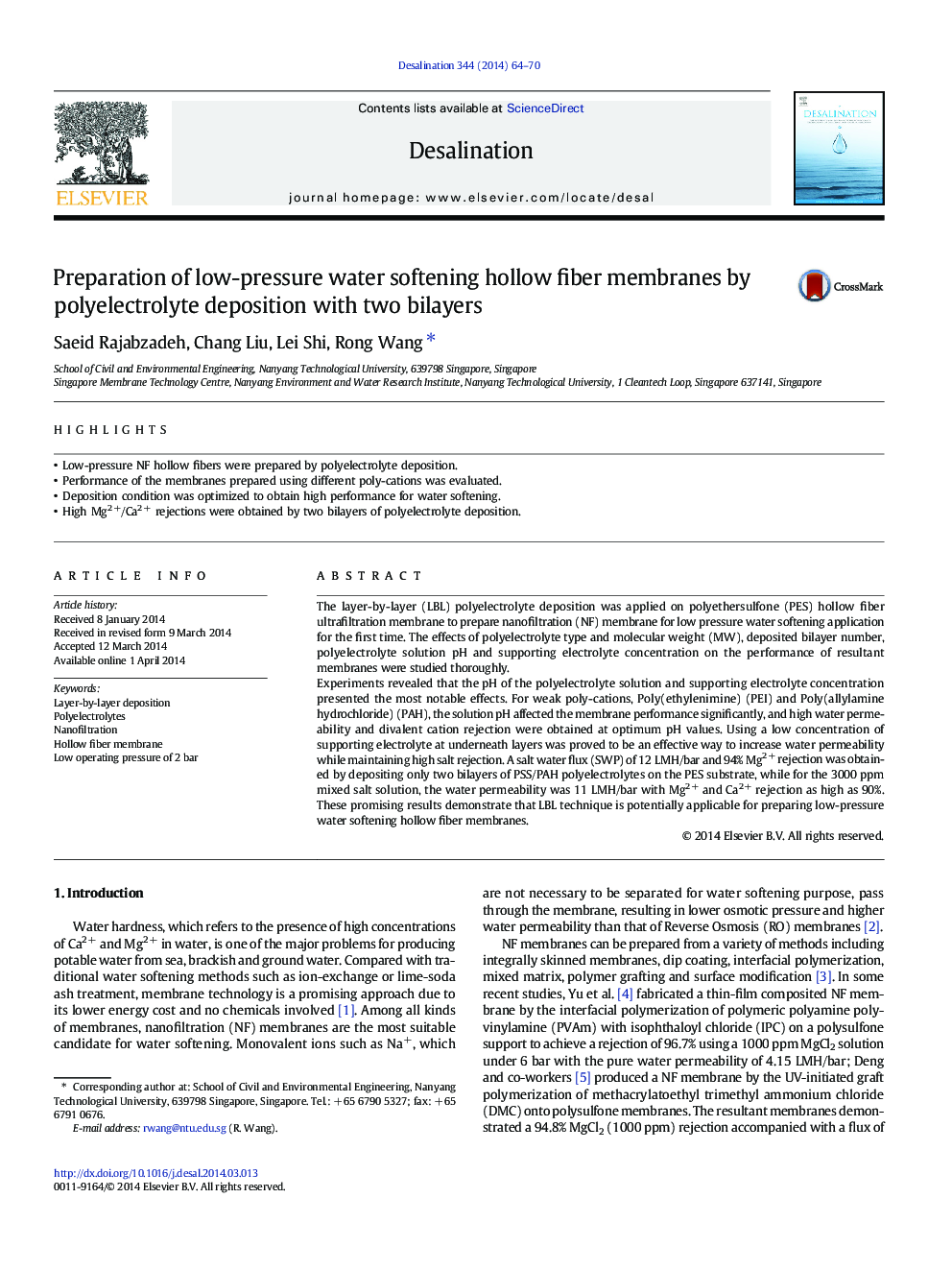| Article ID | Journal | Published Year | Pages | File Type |
|---|---|---|---|---|
| 7008443 | Desalination | 2014 | 7 Pages |
Abstract
Experiments revealed that the pH of the polyelectrolyte solution and supporting electrolyte concentration presented the most notable effects. For weak poly-cations, Poly(ethylenimine) (PEI) and Poly(allylamine hydrochloride) (PAH), the solution pH affected the membrane performance significantly, and high water permeability and divalent cation rejection were obtained at optimum pH values. Using a low concentration of supporting electrolyte at underneath layers was proved to be an effective way to increase water permeability while maintaining high salt rejection. A salt water flux (SWP) of 12Â LMH/bar and 94% Mg2Â + rejection was obtained by depositing only two bilayers of PSS/PAH polyelectrolytes on the PES substrate, while for the 3000Â ppm mixed salt solution, the water permeability was 11Â LMH/bar with Mg2Â + and Ca2Â + rejection as high as 90%. These promising results demonstrate that LBL technique is potentially applicable for preparing low-pressure water softening hollow fiber membranes.
Related Topics
Physical Sciences and Engineering
Chemical Engineering
Filtration and Separation
Authors
Saeid Rajabzadeh, Chang Liu, Lei Shi, Rong Wang,
